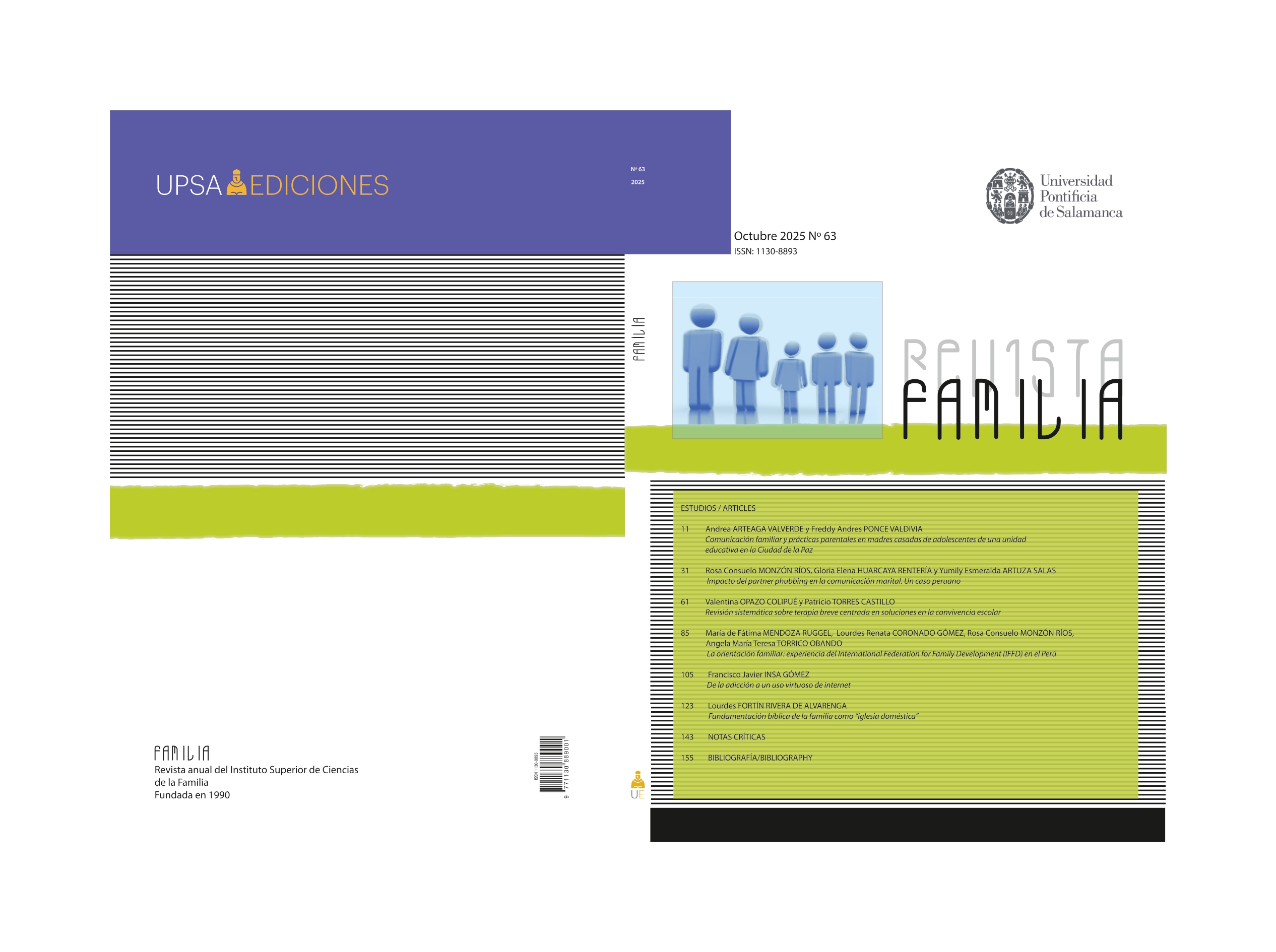Impacto del partner phubbing en la comunicación marital Un caso peruano
Contenido principal del artículo
El estudio tuvo como objetivo determinar la relación entre partner phubbing y la comunicación conyugal en personas casadas o convivientes, con edades comprendidas entre 25 y 55 años, residentes en Perú. La idea de investigación surgió después de una observación espontánea a parejas en lugares públicos, la cual generó la pregunta sobre si los adultos en pareja ofrecían una mayor atención hacia el celular que a sus propios cónyuges, determinando las dos variables de estudio. La investigación es de paradigma cuantitativo de tipo descriptiva, correlacional, de campo; con un diseño no experimental y transversal. La muestra integrada por 342 participantes se abordó mediante muestreo no probabilístico por redes (bola de nieve). Los instrumentos estuvieron constituidos por la escala de Partner Phubbing de Roberts y David (2016) y el Inventario de Comunicación conyugal de Bienvenu (1970), cuyas confiabilidades fueron comprobadas en una prueba piloto, obteniéndose coeficientes Alpha de Cronbach de 0.83 y 0.94 respectivamente. Dichos cuestionarios fueron compartidos a través de las redes sociales Facebook y WhatsApp. Para el análisis de los datos se utilizó el análisis de correlación no paramétrica y la estadística descriptiva, lo que facilitó identificar tendencias y describir las características de la muestra. Los hallazgos indican que el partner phubbing impacta de manera significativa negativa en un 32.2% sobre la comunicación conyugal. Se recomienda ejercer un mayor autocontrol, seleccionar adecuadamente el lugar dónde se coloca el teléfono para no interferir en el diálogo y priorizar los momentos compartidos con la pareja.

